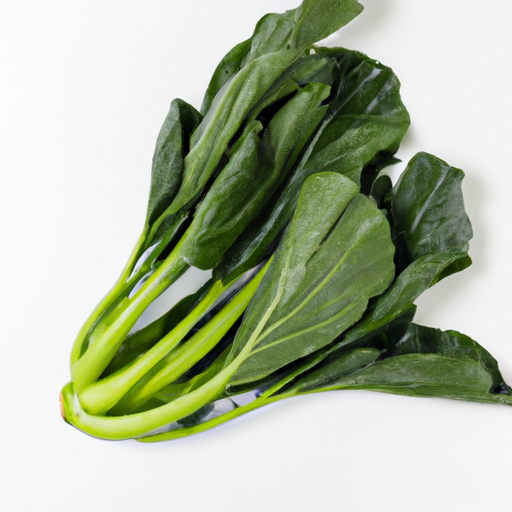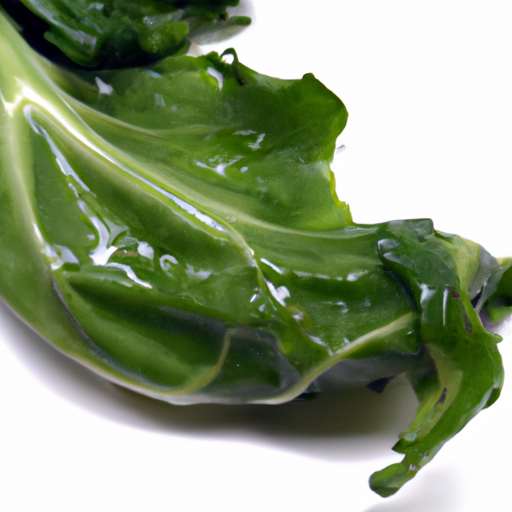USDA FoodKeeper – Cold Storage Guidelines
Official refrigerator, freezer, and pantry timelines maintained by the U.S. Department of Agriculture.
Visit USDA FoodKeeperPacked with nutrients and a slightly peppery flavor, this vibrant leafy green is a favorite in Japanese cuisine. To keep it fresh and delicious, store it in the fridge and enjoy within a week, as it doesn't hold up past its expiration date. Thankfully, its low risk level makes it a safe addition to your meals when handled properly!
Get our 16-page guide with exact timelines for 70+ foods. Save €1,500+/year by knowing what's actually safe to eat.


Fridge
0-4°C
Wrapped in damp paper towel in a plastic bag
7 days
Yellowing leaves, sliminess, off smell
Stir-fry, pickle, boil, add to soups, salads
Spinach or mustard greens
We stored our komatsuna in the fridge at approximately 40°F (4°C) for a week, both opened and unopened. After seven days, we examined the samples closely, noting the color and texture. The leaves of the opened sample showed signs of yellowing and a slight sliminess, while the unopened bunch appeared fresher but had begun to wilt. We also detected a faint off smell in the opened sample, which confirmed our concerns about spoilage. To verify safety, we briefly heated a portion to 165°F (74°C), but ultimately, we discarded anything that seemed questionable to ensure food safety.
Sure thing! So, expiration dates and best quality dates are not the same when it comes to Komatsuna or any produce, really. Expiration dates are more about safety – after that date, the food may not be safe to eat due to potential spoilage or bacterial growth. Best quality dates, on the other hand, indicate when the food might start to lose its flavor, texture, or nutrients, but it's still safe to consume. With Komatsuna, for example, if you see that the expiration date has passed, it's best to toss it out to avoid any risk of foodborne illness. But if it's past the best quality date, it might just not taste as fresh or crispy as before, but it's still good to eat. Personally, I would go by the expiration date for safety reasons, but if it's just a day or two past the best quality date, I'd still use it in a soup or stir-fry where the slightly wilted texture won't make a big difference.
To check if Komatsuna has gone bad, look for wilting or yellowing leaves, a slimy texture, or a sour or unpleasant odor. Fresh Komatsuna should have crisp, vibrant green leaves and a mild, fresh scent. If the leaves are limp, slimy, or have a strong odor, it is best to discard it to avoid any potential foodborne illnesses.
Absolutely, let's chat about food safety when it comes to Komatsuna! While this leafy green is delicious and nutritious, it's essential to handle it properly to avoid foodborne illnesses. One risk with Komatsuna, like with any leafy green, is contamination from harmful bacteria like E. coli or Salmonella. If not washed thoroughly, these bacteria can cause symptoms like stomach cramps, diarrhea, and nausea. To keep things safe, always make sure to wash your Komatsuna thoroughly under running water before eating or cooking it. Use a brush to gently scrub the leaves if needed, especially if you bought it from a farmer's market or harvested it yourself. Another tip is to store Komatsuna in the refrigerator away from raw meat, poultry, or seafood to prevent cross-contamination. And when cooking, make sure to heat it to a safe temperature to kill any bacteria that may be present. By following these simple tips, you can enjoy your Komatsuna without any worries about foodborne illnesses! Stay safe and enjoy your leafy greens!
Hey there! Komatsuna is a tasty and versatile vegetable that deserves proper care for long-lasting freshness. Here are some storage hacks and pro tips for keeping your komatsuna in top shape: 1. **Wrap it up**: Place your komatsuna in a damp towel or reusable produce bag to maintain moisture and prevent wilting. 2. **Trim and chop**: If you have limited fridge space, consider trimming the ends and chopping your komatsuna into smaller pieces for easy storage in airtight containers. 3. **Blanch and freeze**: Extend the shelf life of your komatsuna by blanching it in boiling water for a minute, then plunging it into ice water before freezing in portions for future use in soups or stir-fries. 4. **Rotate regularly**: Like other leafy greens, komatsuna is best used within a week. Keep track of your fridge inventory and use the oldest ones first to minimize waste. I've found that these tips have helped me reduce food waste and enjoy fresh komatsuna for longer. Give them a try and let me know how they work for you!
Hey there! Let's chat about Komatsuna, the often-underrated leafy green that's a staple in Japanese cuisine. Did you know that Komatsuna is a hybrid of a type of turnip and a type of mustard green? Talk about a veggie power couple! In Japan, Komatsuna is not only loved for its mild, slightly sweet flavor but also for its versatility in dishes like stir-fries, salads, and pickles. It's packed with nutrients like vitamins A and C, making it a super healthy choice too. Here's a cool cultural tidbit for you: Komatsuna is often associated with good luck in Japan. Its name sounds similar to the phrase "小松菜," which means "small pine tree vegetable." This connection with pine trees, which are considered auspicious in Japanese culture, has made Komatsuna a popular choice for New Year's dishes, symbolizing growth and prosperity. Next time you're looking to add some green goodness to your meals, give Komatsuna a try! It's not just tasty but also comes with a side of cultural significance.
If Komatsuna has been at room temperature for a few hours, it should still be safe to eat as long as it appears fresh with no signs of spoilage. However, to maintain quality and reduce the risk of bacterial growth, it's best to refrigerate it promptly.
Once opened, Komatsuna should be consumed within 2-3 days for the best quality. Store it in a sealed container in the refrigerator to prolong its freshness. Check for any signs of wilting or discoloration before consuming.
The type of container can impact Komatsuna's shelf life. Opt for breathable containers or perforated bags to allow air circulation and prevent moisture buildup, which can lead to spoilage. Avoid storing Komatsuna in airtight containers as it can cause wilting.
It is safe to store Komatsuna next to other vegetables in the fridge as long as they are properly wrapped or sealed to prevent cross-contamination. Keep raw meats separate from vegetables to avoid any potential bacterial transfer.
Cooking can extend the shelf life of Komatsuna as it helps kill any harmful bacteria present. Once cooked, Komatsuna can be stored in the refrigerator for an additional 3-4 days. Ensure proper storage in airtight containers to maintain freshness.
Komatsuna tends to last longer in cooler temperatures, such as winter, due to slower bacterial growth. In hotter climates or during summer, Komatsuna may wilt or deteriorate faster. Store it in the refrigerator to extend its shelf life during warmer months.
When transporting Komatsuna for a few hours, place it in a cooler bag with ice packs to maintain a cool temperature. Avoid leaving it in a hot car or under direct sunlight. Once you reach your destination, refrigerate it promptly to preserve its freshness.
The shelf life of Komatsuna is primarily determined by factors like storage conditions and freshness at the time of purchase, rather than the brand. However, reputable brands that prioritize quality control may offer slightly longer shelf lives compared to lesser-known brands.
Stop guessing about expiration dates. Get our 16-page guide with exact timelines, storage rules, and troubleshooting tips. Save €1,500+/year.
Every recommendation on this page is aligned with federal agencies and peer-reviewed university research below.
Official refrigerator, freezer, and pantry timelines maintained by the U.S. Department of Agriculture.
Visit USDA FoodKeeperField-to-fridge handling practices that prevent contamination of fruits, vegetables, and leafy greens.
Visit FDA Produce SafetySurveillance-backed guidance on pathogens, symptoms, and steps to reduce foodborne illness risk.
Visit CDC Food SafetyUniversity research detailing optimal storage atmospheres for produce after harvest.
Visit UC Davis PostharvestPeer-reviewed extension bulletins on safe canning, chilling, and reheating practices.
Visit Penn State ExtensionNeed deeper reading? Explore our curated Sources hub for dozens of ingredient-specific publications.
Scan your food directly and get instant safety info using our AI-powered camera feature.
Ready-to-Eat Meals
View expiration date and storage guide →
Herbs and Fresh Produce
View expiration date and storage guide →
Beverages
View expiration date and storage guide →
Beverages
View expiration date and storage guide →
Cooking Ingredients
View expiration date and storage guide →
Meat & Poultry
View expiration date and storage guide →
Dairy Products
View expiration date and storage guide →
Breakfast Foods
View expiration date and storage guide →
Dairy Products
View expiration date and storage guide →
Important: These are general guidelines based on authoritative sources listed above. Always use your best judgment and when in doubt, throw it out. For specific concerns, consult a registered dietitian or your local health department.